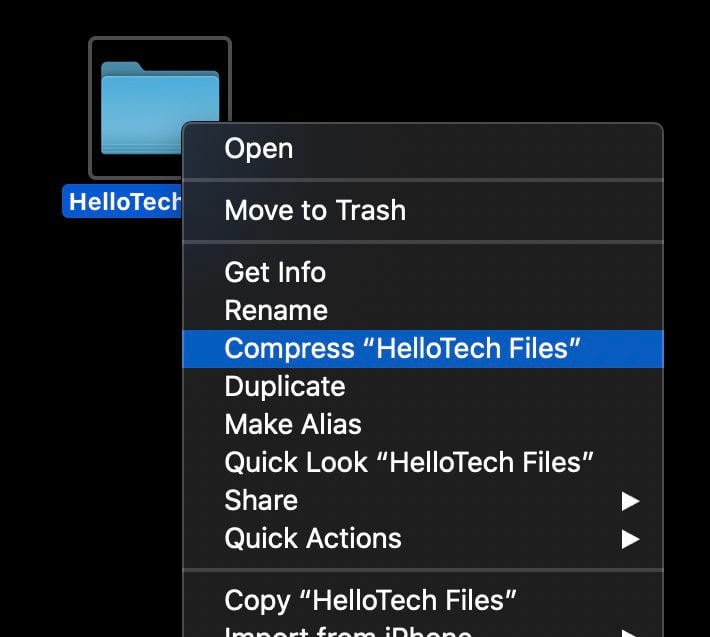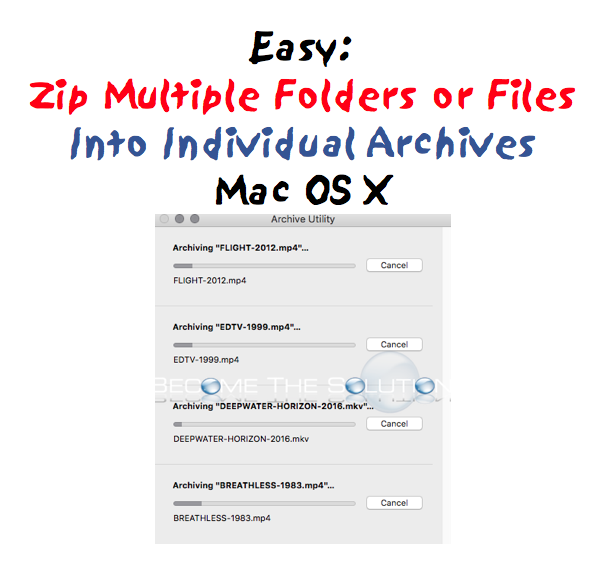

- #How to zip files on mac os install
- #How to zip files on mac os zip file
- #How to zip files on mac os archive
- #How to zip files on mac os rar
- #How to zip files on mac os software
#How to zip files on mac os install
The catch: you have to install it yourself.Īs of this writing, the directions in the Readme do not work, so you’ll have to access the hidden Library folder, then place the license file yourself. They did not remove the copy protection scheme, but include a free license with each download. Zipster once cost money, but the developers have since decided to give it away. The application you can drag to Applications, just like you do for other programs. You’ll find three files: the application itself, a license file, and a readme. Hopefully this will be the last time you do that.

Hilariously enough, it comes in a ZIP file, which you’ll have to extract by opening it. This simple application mounts ZIP files, similar to how DMG files already open on your Mac. If you’re a Finder power user-or even just someone who made it suck less and now mostly likes it-you might be wondering why you can’t open ZIP files in the Finder itself. Zipster: Mount ZIP Files in the Finder (and Only ZIP Files)

#How to zip files on mac os rar
But it’s hard to complain too much: this is a free application that opens ZIP and RAR files instead of unarchiving them.
#How to zip files on mac os software
And the software will occasionally “encourage” you to download Trend Mirco’s anti-malware software, along with a few nags asking for App Store ratings. The interface doesn’t quite feel native to macOS, owning mostly the the ugly toolbar buttons. Having said that, there are a few downsides. Finally there’s the Share button, which lets you quickly send files to any program that supports the Mac share menu. “Extract” will extract all files or your currently selected file, while “Secure Extract” will scan files for malware, assuming you’ve downloaded Trend Micro’s Mac Malware scanner.
#How to zip files on mac os zip file
zip file is automatically moved to our Trash once the operation is complete.“Open,” somewhat confusingly, opens a new ZIP file: it does not open files in the current ZIP file.
#How to zip files on mac os archive
This time, the contents of the archive appear in our folder, but the original. Returning to our original example, we’ll try unzipping our sample file again. Any changes you make in the Archive Utility Preferences take effect immediately, so there’s no need to save or reboot. Therefore, we’ll set “After Expanding” to move archive to Trash. In our case, we want to remove the original zip file, but not necessarily delete it immediately. This last option could be helpful if you want to save backups of your original archive files in location that is out of the way and won’t clutter up your main download or working folders. Instead of leaving the file in its original location, you can have Archive Utility move it to the Trash, delete it permanently (which bypasses the Trash and removes the file immediately), or move the archive to another location. tar file once you’ve extracted its contents. The “After Expanding” option lets you decide what to do with that original. This would be handy if you frequently extract archives from different local and networked locations but want all unarchived file contents to be stored in the same place, such as a folder on your desktop. In the top section, you can change the default behavior of extracting archives into the same folder, and instead designate a different location in which to store the contents of all extracted zip files.

The Archive Utility Preferences window is divided into two sections that let you configure several options for how archive files are both extracted (top) and created (bottom). With the app launched, click on Archive Utility in the OS X Menu Bar and select Preferences. Either way, find Archive Utility.app and double-click to open it. You can either manually navigate to that folder and launch the app, or simply search for “Archive Utility” with Spotlight. The Archive Utility application file is hidden deep within the OS X System folder: System > Library > CoreServices > Applications > Archive Utility.app. To avoid needing to do this, we can modify how OS X handles a .zip file by modifying the preferences for Archive Utility, the system tool that manages archive files in the operating system. Unless we want to save the original file for some reason, we’ll now need to manually select the file in Finder and delete it, which is an extra, needless step. zip file, the contents of the file are extracted to the same folder and we’re left with the archive file’s contents and the original.


 0 kommentar(er)
0 kommentar(er)
